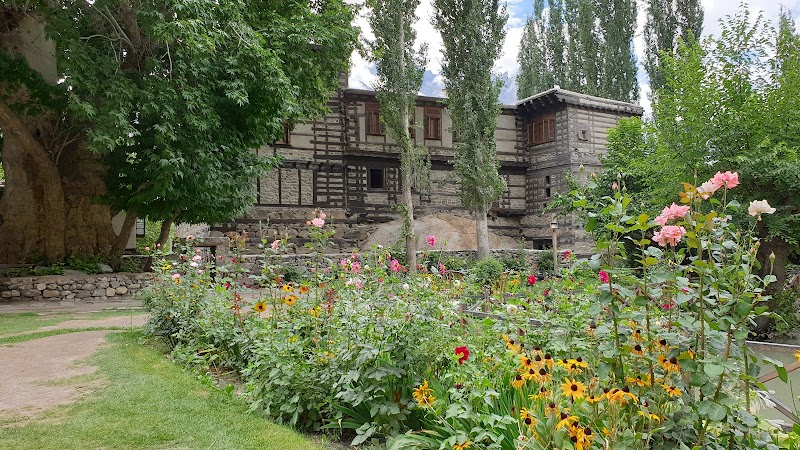Trekking to K2 Base Camp: Navigating the Wild Heart of Karakoram, Skardu
Experience the thrill of trekking to K2 Base Camp, surrounded by the wild, pristine nature of the Karakoram range near Skardu, Pakistan. This rugged trail offers sweeping glacier views, challenging terrain, and a chance to engage with a majestic environment that demands respect and preparation.
Hydrate Early and Often
Thin mountain air means your body dehydrates faster. Carry at least 3 liters of water daily and use purification tablets or filters from local water sources.
Invest in Sturdy Footwear
Trails range from rocky to icy; ankle-supporting hiking boots with strong grip will protect you from twists and slips.
Acclimatize to Avoid Altitude Sickness
Plan rest days and ascend slowly above 3,000 meters to let your body adapt to lower oxygen levels.
Pack Layers for Unpredictable Weather
Temperatures can swing dramatically; quick-dry base layers, insulating mid-layers, and waterproof shells are necessary.
Trekking to K2 Base Camp: Navigating the Wild Heart of Karakoram, Skardu
Venturing to the K2 Base Camp from Skardu plunges you into one of the world’s most rugged and breathtaking mountain ranges. This trek covers approximately 75 kilometers round-trip, winding through elevations ranging from 2,500 meters at Skardu to about 5,150 meters at base camp. The path is diverse—rock-strewn moraine, icy streams daring you to cross, and alpine meadows framed by peaks that refuse to be tamed. Each step brings you closer to K2’s towering presence, revealing glaciers that shift and sigh as if alive.
Starting in Skardu, a hub of quiet mountain energy, you’ll follow the Shigar River, its currents urging you onward. The terrain demands respect: steep ascents, loose gravel, and at times, biting winds that test your resolve. Forest patches provide shaded respite, where whispers of pine and fresco of wildflowers contrast the stark grandeur above.
Timing is critical—aim for late June through September when the weather is stable, trails are clear, and days long. Prepare for altitude challenges by pacing yourself and prioritizing hydration; the air grows thin and every breath counts. Durable, broken-in boots with solid ankle support are non-negotiable, as is layered clothing to adapt from warm valley hikes to chilled alpine evenings.
Along the way, small villages offer moments to connect with Balti culture and recharge with simple, hearty meals. The trail is more than a route; it’s a conversation with nature’s fierce self, demanding attention and patience. Reaching base camp means standing quietly beneath K2’s daunting face, recognizing that here, human ambition meets mountain endurance.
This trek is not for the casual wanderer—it calls for physical strength, preparation, and respect for Karakoram’s raw character. Those who answer the call leave with memories carved from stone, sky, and the persistent pulse of one of Earth’s last great wildernesses.
Nearby Trips
All Adventures
Boat Charters
Water Activities
Adventures near Skardu
Discover the unique and memorable adventures that make Skardu special.
Frequently Asked Questions
How physically demanding is the K2 Base Camp trek?
The trek is challenging due to a combination of distance, steep ascents, and high elevation gain up to 5,150 meters. Good fitness and acclimatization are essential to avoid altitude sickness and fatigue.
Is technical climbing experience required?
No technical climbing skills are needed, but basic trekking experience, including navigating rocky and at times icy paths, is important. Hiring a local guide is advisable for route safety.
When is the best time to attempt the trek?
Summer months from late June to early September offer the best combination of stable weather, moderate temperatures, and accessible routes.
What permits or permissions are needed?
Trekking in the Karakoram region requires permits issued by local authorities, often facilitated by tour operators or guides in Skardu.
Are there accommodations along the route?
Basic guesthouses and lodges operate in villages en route, but facilities are minimal. Most trekkers stay in tents or rely on local accommodations when possible.
What wildlife might I encounter on the trek?
The region hosts species like Himalayan ibex, snow leopards (rarely seen), marmots, and various high-altitude birds, especially near forested stretches and meadows.
Recommended Gear
Mountaineering-grade Hiking Boots
Critical for traction and ankle support over rocky, sometimes icy terrain.
Layered Clothing System
Allows adapting to fluctuating temperatures from warm valleys to freezing alpine nights.
Water Purification System
Necessary for safe hydration using natural water sources along the trail.
Trekking Poles
Offers stability on uneven terrain and reduces strain on knees during descents.
Local Insights
Hidden Gems
- "Uli Biaho Glacier viewpoint offering a stunning framing of K2’s glaciers."
- "Khurdopin glacier area near base camp with lesser-trafficked side trails."
- "Shangrila Farms near Skardu, an excellent warm-up spot and cultural experience."
- "Sheosar Lake in Deosai National Park, reachable via side trip, featuring pristine high-altitude wetlands."
Wildlife
- "Himalayan ibex roaming rocky slopes."
- "Rare snow leopard habitat within Karakoram’s remote zones."
- "Golden eagle soaring above steep valleys."
- "Brown bear sightings near forest edges in spring and summer."
History
"The region is historically significant as a crossroads for ancient Silk Road routes and home to the Balti people, whose culture and architecture reflect centuries of adaptation to extreme mountain landscapes."

